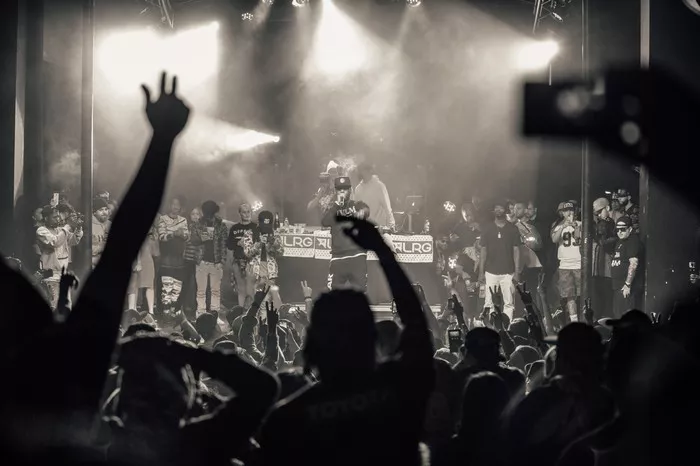Hip Hop, a cultural and artistic movement that originated in the South Bronx of New York City in the 1970s, has become a global phenomenon. It has transcended boundaries, influencing music, fashion, dance, and even politics. To truly understand the essence of hip hop, we must delve into its core elements. In this article, we will explore the five fundamental elements of hip hop that have shaped and defined this vibrant culture for decades.
1. Hip Hop: A Historical Overview
To understand the five elements of hip hop, we must first grasp the historical context in which this cultural phenomenon emerged. Hip hop was born in the impoverished neighborhoods of the South Bronx in the 1970s. It was a response to the social and economic challenges faced by African American and Latinx communities in the wake of the Civil Rights Movement.
Hip hop arose as a form of self-expression and empowerment for marginalized youth. It provided a platform for them to voice their experiences, frustrations, and dreams. The term “hip hop” itself is often attributed to DJ Afrika Bambaataa, one of the pioneers of the movement.
2. MCing: The Art of Rap
At the heart of hip hop lies MCing, or rapping, which is often the most visible element of the culture. Hip hop artists, known as MCs (Master of Ceremonies), use rhythm and rhyme to convey their stories and messages. MCing is not limited to the stage; it can happen anywhere, from street corners to cyphers.
Rap is a powerful tool in hip hop, serving as a vehicle for social commentary, storytelling, and personal expression. Artists like Tupac Shakur, Notorious B.I.G., and Kendrick Lamar have used their lyrical prowess to address issues such as racism, inequality, and the struggles of urban life. Hip hop has the unique ability to capture the pulse of society and reflect it back through the poetic medium of rap.
3. DJing: The Beat Behind the Movement
Another foundational element of hip hop is DJing, which provides the rhythmic foundation for the culture. DJs are responsible for selecting and mixing beats, creating a backdrop for MCs to perform. In the early days of hip hop, DJs would use two turntables and a mixer to seamlessly blend songs, creating a continuous flow of music.
Hip hop DJs are not just music selectors; they are also record collectors and crate diggers, constantly searching for rare and unique vinyl records to sample. This practice of sampling has had a profound impact on the evolution of hip hop music, with iconic tracks built upon snippets of jazz, funk, soul, and other genres.
4. Breaking: The Dance of Freedom
Beyond music, hip hop encompasses a dynamic and expressive form of dance known as breaking. Breaking, often referred to as breakdancing, originated alongside the music in the Bronx. It consists of intricate footwork, acrobatic moves, and freezes that challenge the laws of gravity.
Breaking is not just a physical expression but also a means of storytelling and competition. B-boys and B-girls engage in battles, where they showcase their skills and creativity in a circle known as a cipher. The dance form empowers individuals to break free from societal constraints, and it has been a source of inspiration for countless dancers worldwide.
5. Graffiti Art: The Visual Language
While MCing, DJing, and breaking are the most prominent elements of hip hop, graffiti art is its visual counterpart. Hip hop graffiti emerged as a form of rebellion and self-expression. Artists used spray cans to leave their mark on city walls and subway cars, transforming urban landscapes into vibrant canvases.
Graffiti art in hip hop is more than just vandalism; it is a visual language that communicates messages, often political or social in nature. Artists like Jean-Michel Basquiat and Keith Haring began their careers in the graffiti scene before gaining recognition in the art world. Graffiti in hip hop serves as a testament to the culture’s resilience and determination to be seen and heard.
Unity: The Unseen Element
Beyond the five core elements, there is a sixth element that binds them together: unity. Hip hop culture emphasizes the importance of community and collaboration. It encourages artists, dancers, DJs, and graffiti writers to come together and create something greater than themselves.
The unity within hip hop extends to the notion of the “hip hop family.” It’s not uncommon for artists to refer to their fellow creators as brothers and sisters, highlighting the deep bonds formed through a shared love for the culture. Unity is what has allowed hip hop to thrive for over four decades and to spread its influence worldwide.
Conclusion
In conclusion, hip hop is a multifaceted cultural movement that comprises five core elements: MCing, DJing, breaking, graffiti art, and unity. These elements, born out of the South Bronx in the 1970s, have transcended time and place, becoming a global phenomenon that continues to evolve and shape contemporary society.
Hip hop is more than just music; it is a reflection of the human experience, a form of resistance, and a vehicle for social change. Its ability to adapt and innovate has allowed it to remain relevant in an ever-changing world. As we look to the future, hip hop will undoubtedly continue to inspire and empower generations to come, reminding us of the enduring power of creativity and self-expression.

